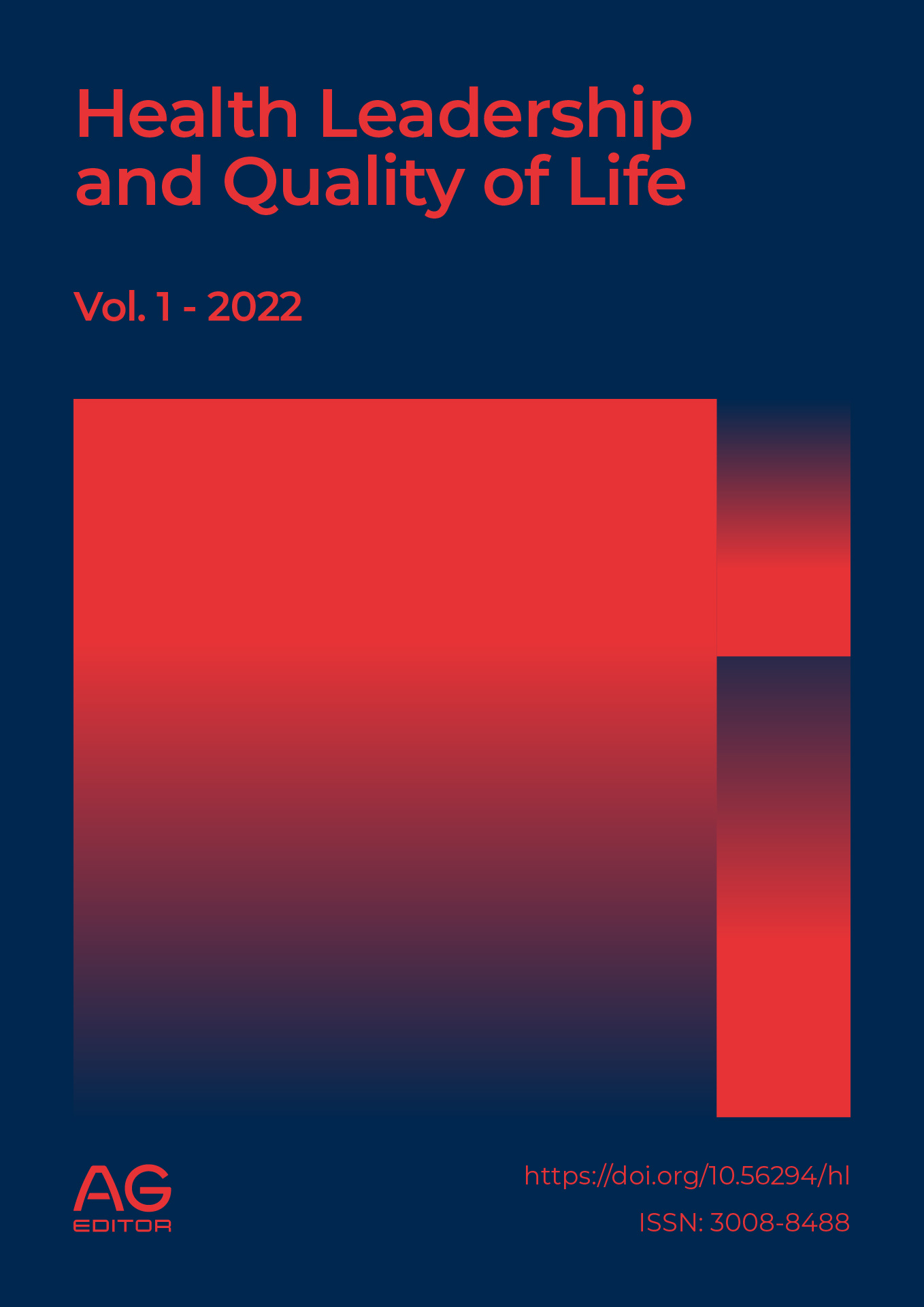Enhancing Quality of Life and Health Behavior Adherence in Coronary Artery Bypass Graft Patients
DOI:
https://doi.org/10.56294/hl2022107Keywords:
The Coronary Artery Bypass Graft (CABG), quality of life, surgery recovery, heart disease recoveryAbstract
Coronary artery disease patients who have been exposed to CABG surgery have greatly improved cardiac function and chances of survival. However, recovery is mainly dependent on postoperative quality of life and compliance with prescribed health behaviors, such as diet, exercise, and medication. To enhance quality of life, enhance adherence to prescribe health practices, improve long-term recovery, and decrease the risk of complications. The method was based on data collection from 153 CABG patients at two points in time: before and after treatment. The intervention provided structured support for motivating changes towards a healthy lifestyle. The statistical analysis consisted of adjusted R², regression analysis, and paired t-tests for assessing the outcome related to health behavior adherence and quality of life (QoL) at both pre and post-treatment phases. Post-treatment data revealed an improvement in quality of life among patients and commitment to healthy behaviors. Statistical analysis confirmed the effectiveness of the intervention, showing significant changes in both aspects. This intervention was successful in enhancing QoL significantly and fostering health behaviors in CABG patients. This evidence reveals that the provision of support following surgery plays an essential role in enabling health recovery. Thus, the improvement in outcomes of patients following CABG should focus on interventions encouraging lifestyle modifications by the health provider.
References
1. Steinmetz C, Bjarnason-Wehrens B, Baumgarten H, Walther T, Mengden T, Walther C. Prehabilitation in patients awaiting elective coronary artery bypass graft surgery–effects on functional capacity and quality of life: a randomized controlled trial. Clinical rehabilitation. 2020 Oct;34(10):1256-67.
2. Açıkel ME. Evaluation of depression and anxiety in coronary artery bypass surgery patients: a prospective clinical study. Brazilian Journal of cardiovascular surgery. 2019 Aug 5;34:389-95.
3. Dos Santos TD, Pereira SN, Portela LO, Cardoso DM, Dal Lago P, dos Santos Guarda N, Moresco RN, Pereira MB, de Albuquerque IM. Moderate-to-high intensity inspiratory muscle training improves the effects of combined training on exercise capacity in patients after coronary artery bypass graft surgery: A randomized clinical trial. International journal of cardiology. 2019 Mar 15;279:40-6.
4. Hoyler MM, Tam CW, Thalappillil R, Jiang S, Ma X, Lui B, White RS. The impact of hospital safety‐net burden on mortality and readmission after CABG surgery. Journal of Cardiac Surgery. 2020 Sep;35(9):2232-41.
5. Pahwa S, Bernabei A, Schaff H, Stulak J, Greason K, Pochettino A, Daly R, Dearani J, Bagameri G, King K, Viehman J. Impact of postoperative complications after cardiac surgery on long‐term survival. Journal of cardiac surgery. 2021 Jun;36(6):2045-52.
6. Højskov IE, Moons P, Egerod I, Olsen PS, Thygesen LC, Hansen NV, La Cour S, Bech KH, Borregaard B, Gluud C, Winkel P. Early physical and psycho-educational rehabilitation in patients with coronary artery bypass grafting: A randomized controlled trial. Journal of Rehabilitation Medicine. 2019 Feb 1;51(2):136-43.
7. Højskov IE, Thygesen LC, Moons P, Egerod I, Olsen PS, Berg SK. The challenge of non-adherence to early rehabilitation after coronary artery bypass surgery: Secondary results from the SheppHeartCABG trial. European journal of cardiovascular nursing. 2020 Mar 1;19(3):238-47.
8. Rakhshan M, Toufigh A, Dehghani-Firouzabadi A, Yektatalab S. Effect of Cardiac Rehabilitation on Hope Among Cardiac Patients After Coronary Artery Bypass Graft Surgery. Risk Management and Healthcare Policy. 2020 Aug 25:1319-26.
9. Musa AF, Yasin MS, Smith J, Yakub MA, Nordin RB. The Malay version of SF-36 health survey instrument: testing data quality, scaling assumptions, reliability and validity in post-coronary artery bypass grafting (CABG) surgery patients at the National Heart Institute (Institut Jantung Negara—IJN), Kuala Lumpur. Health and Quality of Life Outcomes. 2021 Dec;19:1-1.
10. AbuRuz ME. Pre-operative depression predicted longer hospital length of stay among patients undergoing coronary artery bypass graft surgery. Risk management and healthcare policy. 2019 May 13:75-83.
11. AbuRuz ME, Momani A, Shajrawi A. The association between depressive symptoms and length of hospital stay following coronary artery bypass graft is moderated by perceived control. Risk Management and Healthcare Policy. 2021 Apr 13:1499-507.
12. Højskov IE, Thygesen LC, Moons P, Egerod I, Olsen PS, Berg SK. The challenge of non-adherence to early rehabilitation after coronary artery bypass surgery: Secondary results from the SheppHeartCABG trial. European journal of cardiovascular nursing. 2020 Mar 1;19(3):238-47.
13. Francis T, Kabboul N, Rac V, Mitsakakis N, Pechlivanoglou P, Bielecki J, Alter D, Krahn M. The effect of cardiac rehabilitation on health-related quality of life in patients with coronary artery disease: a meta-analysis. Canadian Journal of Cardiology. 2019 Mar 1;35(3):352-64.
14. Willemsen LM, Janssen PW, Peper J, Soliman-Hamad MA, van Straten AH, Klein P, Hackeng CM, Sonker U, Bekker MW, von Birgelen C, Brouwer MA. Effect of Adding Ticagrelor to Standard Aspirin on Saphenous Vein Graft Patency in Patients Undergoing Coronary Artery Bypass Grafting (POPular CABG) A Randomized, Double-Blind, Placebo-Controlled Trial. Circulation. 2020 Nov 10;142(19):1799-807.
15. Tian M, Wang X, Sun H, Feng W, Song Y, Lu F, Wang L, Wang Y, Xu B, Wang H, Liu S. No-touch versus conventional vein harvesting techniques at 12 months after coronary artery bypass grafting surgery: multicenter randomized, controlled trial. Circulation. 2021 Oct 5;144(14):1120-9.
Published
Issue
Section
License
Copyright (c) 2022 Uma Bhardwaj , Ram Garg , Soumya Ranjan Mahapatra , H. Malathi (Author)

This work is licensed under a Creative Commons Attribution 4.0 International License.
The article is distributed under the Creative Commons Attribution 4.0 License. Unless otherwise stated, associated published material is distributed under the same licence.






